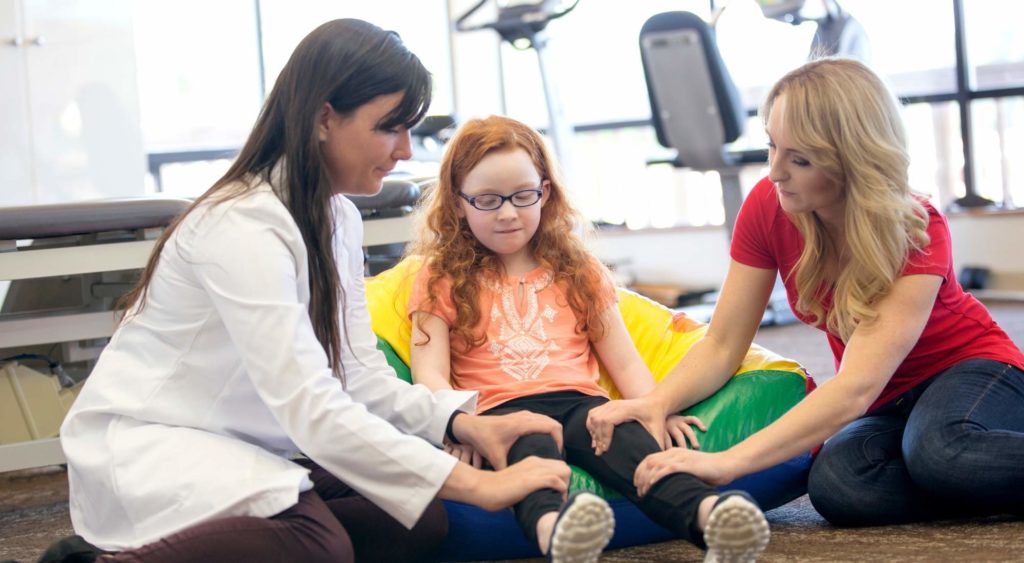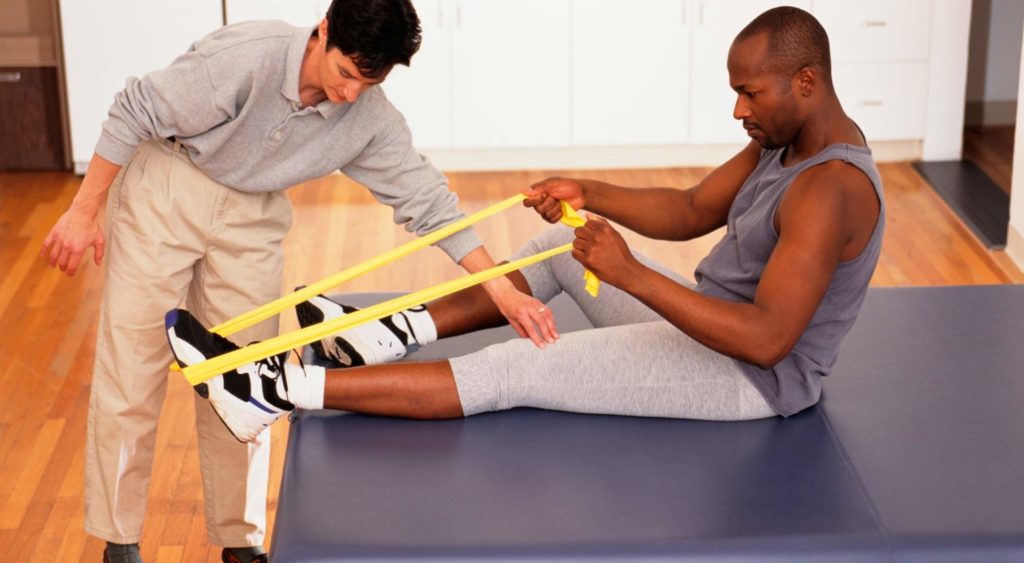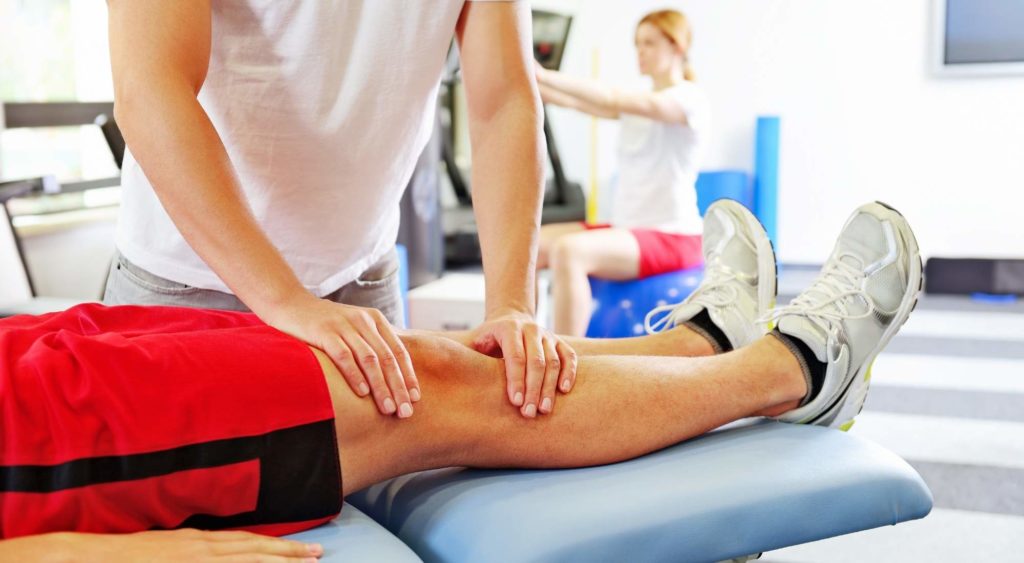
Sitting at the desk is torture. Walking your dog takes energy away from you instead of giving it back. Sleeping is less restful and more like a battle with your body.
If any of these situations sound like you, you may be wondering if physical therapy can help. But does it work?
Physical therapy:
- Is an excellent pain management strategy
- Can help you avoid surgery
- Can bring back functional movement to stiff joints or an injured body
In this guide, we will walk you through how physical therapy can benefit you and help you regain some freedom of movement.
Table of Contents
- What Is Physical Therapy?
- Does Physical Therapy Work to Treat Chronic Conditions?
- What Do You Do In Physical Therapy?
- Does Physical Therapy Really Work? It Depends On Your Commitments
- How Does Physical Therapy Work? 3 Benefits of Physical Therapy
- Looking For A Physical Therapist? In Motion O.C. Physical Therapist Are Ready To Help

What Is Physical Therapy?
Quality physical therapy is more than targeted exercise. The focus of physical therapy is:
- Healing
- Strengthening
- Prevention
- And education
All of these things work together to make sure you don’t need to come back to physical therapy when your treatment plan is complete.
Treatment may also include massaging muscles or addressing certain cardiovascular symptoms.
Keep reading to learn what physical therapy can do for you.
Does Physical Therapy Work to Treat Chronic Conditions?
The reasons people go to physical therapy are vast — and physical therapy is not just for injury recovery. It can be used to help chronic conditions like:
- Scoliosis
- Chronic and intermittent pain
- Sacroiliac joint dysfunction (SI joint pain)
- Sciatica
- Arthritis
- Headaches and neck pain
- Neurological injuries such as a stroke or balance deficits
As you can see, physical therapy is multifaceted and can treat a wide range of conditions.
Let’s look at Jana for example:
She suffered from headaches for years and pain medication only did so much. By working with her physical therapist she was able to learn and practice exercises that strengthened her neck and back muscles. Over time, her headaches eased and she was able to continue her exercises at home.
Does Physical Therapy Really Work? It Depends On Your Commitments
Physical therapy is like anything else when it comes to your healing. If you only do what you’re supposed to do at the physical therapy office, and not after you leave, it may or not help. This may only provide a temporary fix.
Your commitment matters. Physical Therapy treatments are designed to give you the tools you need to begin healing and continue your healing and injury prevention throughout your lifetime.
How Does Physical Therapy Work? 3 Benefits of Physical Therapy
Physical therapy has a wide range of benefits and these are just a few. Let’s take a look at some of the most common benefits you can receive from doing physical therapy.
#1: Improve Mobility and Movement
A stiff knee in the morning, leg pain during the day, and back pain at night. These things can greatly decrease our overall wellness and happiness.
When you improve your mobility and movement, this allows you to move freely without pain. This can also help prevent falls which are one of the most common causes of injury in adults over age 65.
Pain-free movement can also help prevent obesity. Simply, when moving hurts a little less, we’re likely to move more.
#2: Manage Pain
Living with chronic pain can sometimes make life unbearable. Physical therapy can help you learn ways to manage your daily pain and can help those with:
- Chronic headaches
- Fibromyalgia
- Rheumatoid arthritis
- Osteoarthritis
- Neuropathic pain caused by injury to the tissues or the nerves
Physical therapy that includes aquatic therapy is especially beneficial for those living with chronic pain. Water provides resistance to movement which strengthens your muscles without putting too much pressure on your body. Aquatic therapy decreases weight-bearing stress on your spine and is very beneficial to:
- Athletes
- Pregnant women
- Elderly
- And more
#3: Avoid Surgery
You may be wondering: I can get surgery for this, do I need physical therapy? Surgery can come with many complications and risks. If you’re considering an optional surgery to help with pain management for a chronic condition, physical therapy may be worth a second look.
A study on the Annals of Internal Medicine found that physical therapy works just as well as surgery for some conditions. And comes with fewer complications.
What Do You Do In Physical Therapy?
What can you expect from physical therapy?
Patients usually start with an assessment and an exam. Your PT will want to:
- Assess your range of motion
- Discuss your diagnosis
- Come up with a treatment plan of action
You might also have conversations about your overall lifestyle. Your The PT will want to look at your body holistically. For example, diet and exercise are both important to your rehab success. Additionally, obesity, smoking, Type 2 diabetes, and other conditions can impede physical therapy and slow your recovery.
Be sure to wear comfortable clothing you can easily move in, and that allows the physical therapist to access the point of injury. Comfortable and supportive shoes are also a must.
Keep reading to learn what a typical treatment plan might include and more about how physical therapy works for your body and your goals.
Exercise
The most common treatment is exercise. In order to strengthen the body and protect the muscles, Doctors of Physical Therapy and their assistants will do many exercises with you in the clinic.
In order to make sure you’re doing these exercises correctly, they’ll educate you on the proper form and purpose of each exercise.
Some of the different types of exercise include:
- Strength exercises
- Functional mobility exercises
- Flexibility exercises
- Exercises to improve your range of motion
- Cardiorespiratory exercises
- Exercises for vertigo and dizziness
These exercises will be tailored to your individual needs and a plan will be developed and re-evaluated throughout your treatment.

Massage
According to a study in Science Translational Medicine, massage therapy greatly affects the muscle tissue at the cellular level. It increases muscle repair and reduces inflammation in post-exercise leg samples.
Massage can also help release tension in your muscles and other soft tissues. Deep tissue massage can target muscle tension caused by strains or sprains.
The types of massage used during physical therapy varies depending on the level of pain and stage of your healing.
Some techniques Doctor’s of Physical Therapy use include:
- Parallel mobilization — Planing the tissue with the heel of the hand, thumbs, or forearm.
- Perpendicular mobilization — Strumming or bending with a sustained hold.
- Petrissage — Kneading and squeezing the muscles.
- Myofascial release — This includes holding the tissue for 90 seconds then releasing.
- Friction massage — This is a more specialized technique commonly used in tendinopathies.
- Barrier release — Tissue is held under sustained pressure causing it to suddenly release.
These massage techniques may not sound like a spa treatment, but they are designed to heal and develop your muscles properly as part of your treatment plan.
Therapeutic Modalities
Therapeutic modalities are tools your PTs sometimes use to help promote healing and assist with muscle reeducation. These tools can help by decreasing pain and swelling or lessening muscle spasms that may be causing the pain.
Here are some common therapeutic modalities that are used in the PT office:
- Electrical stimulation
We promise you won’t turn into Frankenstein’s monster. Electrical stimulation, or E-stim, involves electrodes attached to your skin. E-stim is used for both pain relief and functional Improvements. - Ultrasound
Approved by the FDA, ultrasound is used in many ways. It can be used for plantar fasciitis, fracture healing, thrombus dissolution, and more. The waves from ultrasound treatment heat the tendons, muscles, and other tissues to increase blood flow and speed up the healing process. - Phonophoresis
This is a specific application of ultrasound. It’s used to decrease inflammation in the affected area. - Iontophoresis
This is a type of E-stim used to administer medication. The electrical current helps push topical drugs through the skin into the bloodstream. - Heat
Heat is common in many therapeutic modalities. Heat’s local effects can help decrease pain, increase mobility, and temporarily allow for pain-free movement. - Moist Heat
Your PT May apply damp heat packs to injured areas. Moist heat can penetrate the tissues deeper and faster and may speed up functional improvements. - Cold
Cold is meant to reduce blood flow and inflammation. It can temporarily prevent swelling in your joints and after exercises. - Light Therapy
Light therapy involves lasers, light-emitting diodes, and other light sources. Light therapies are used in a variety of applications including the treatment of carpal tunnel syndrome, lower back pain, and wound healing.

Looking For A Physical Therapist? Schedule an Appointment With In Motion O.C. Physical Therapy Today
In Motion O.C. physical therapists work with you to develop a plan of treatment individually designed for you. Our goal is to bring hope, confidence, and joy to you through our work with you.
We’re passionate about your care, and it shows. You’ll be welcomed by our family atmosphere right at the door. We have 7 different doctors of physical therapy, diverse specializations, certifications, and licenses.
Schedule a free consultation today to see how we can help you become a better version of yourself.



